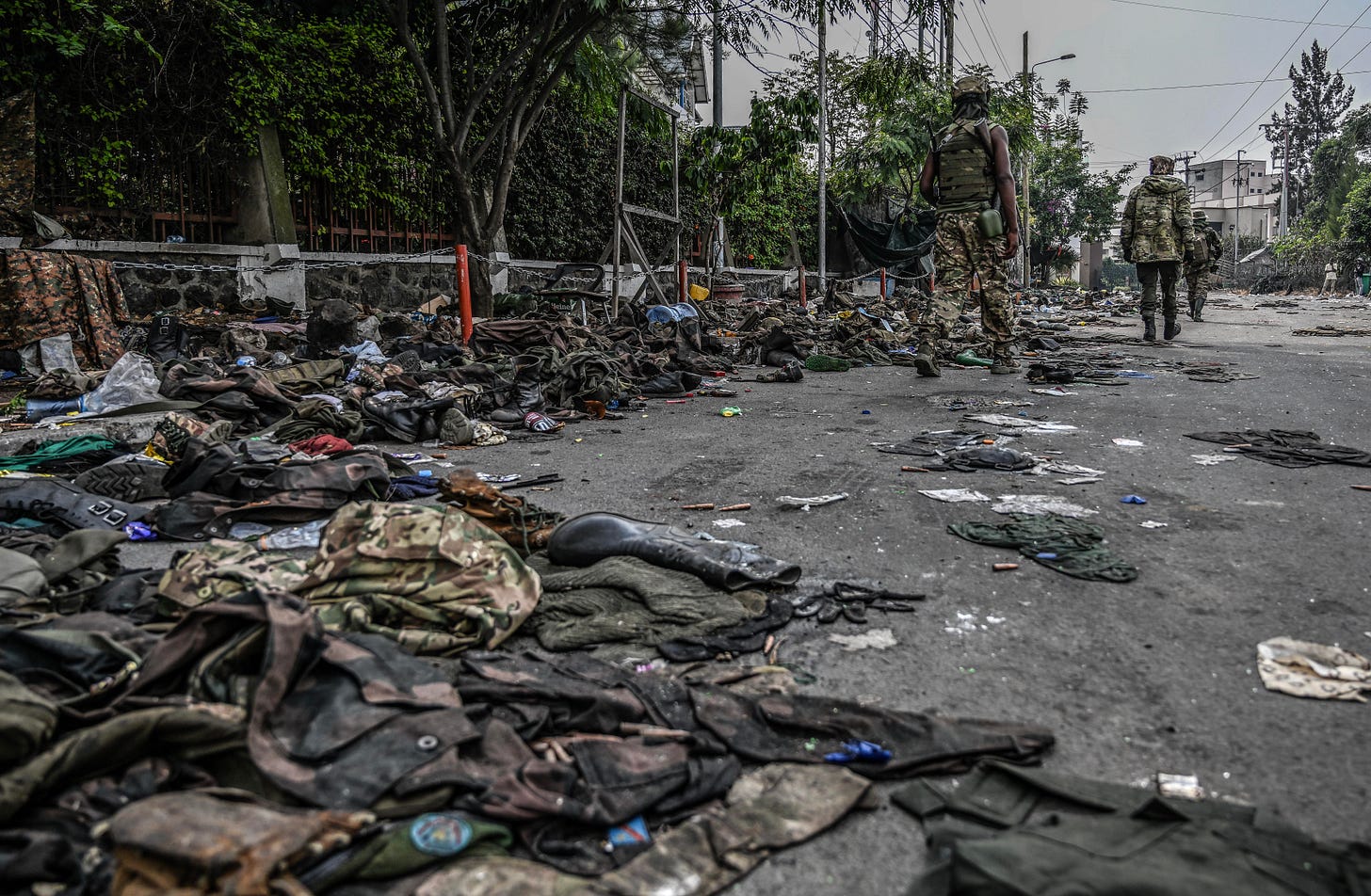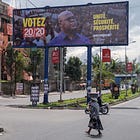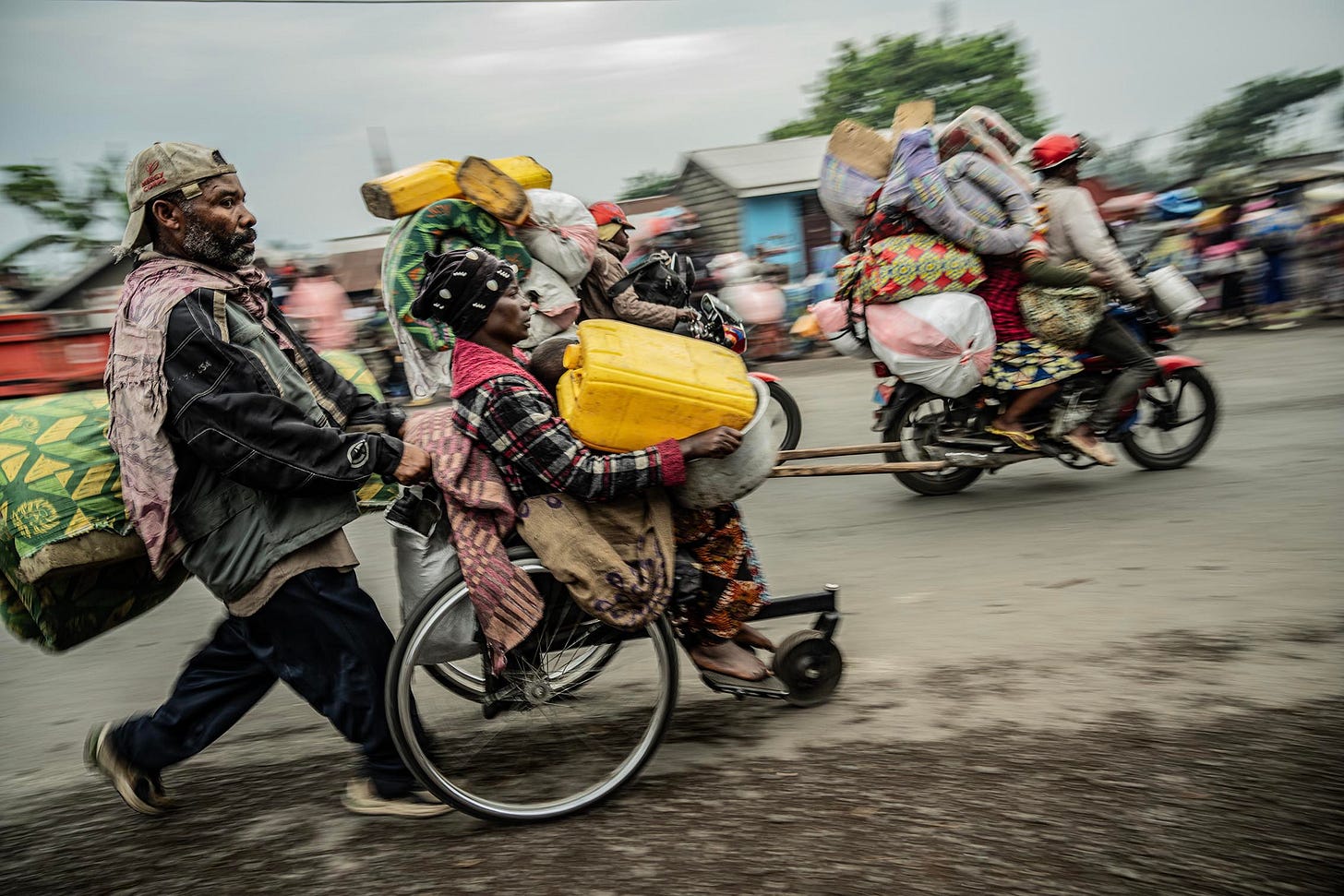M23 is calling the shots
After seizing Goma, can anyone stop the rebel militia from consolidating its control?
Lydia Namubiru

A lightning advance on Goma by March 23 Movement (M23) fighters ended with the rebels declaring the “liberation” of the Congolese city on Monday – allegedly with help from Rwandan armed forces. On Tuesday afternoon – as diplomatic statements condemning their action flew in from around the world – the rebels took control of its airport. By Wednesday they were setting up a parallel administration in Goma, as they have done in other areas of North Kivu province, and expelling pro-Kinshasa mercenaries.
M23 did not stop there. The group continued to advance towards Bukavu, the capital of the neighbouring province, South Kivu. By Thursday morning they had seized the towns of Kiniezire and Mukwidja without resistance – and had come within 65km of Bukavu.
The only man willing to publicly own M23’s actions, Corneille Nangaa, told Reuters on Monday: “Our objective is neither Goma nor Bukavu but Kinshasa, the source of all the problems.” Kinshasa, the capital of the Democratic Republic of the Congo, where President Félix Tshisekedi and his cabinet sit, is 2,531km away from Goma on poor roads.
Nangaa reiterated his intention to capture Kinshasa in a Thursday press conference attended by The Continent in Goma. Nangaa told Reuters that state weakness or absence has caused the proliferation of more than 100 armed groups in the eastern DRC. His stated goal is to “recreate the state”.
Nangaa is a former Congolese elections chief who previously confessed to rigging the 2018 election in favour of Tshisekedi. The two men have since fallen out badly. Nangaa created a political party to rival Tshisekedi in the subsequent 2023 election but didn’t run. Instead, he fled the country and assembled an anti-Tshisekedi alliance – the Alliance Fleuve Congo. In December 2023, M23 was welcomed into this alliance, which also claims to include more than a dozen other parties and fighting forces.
The governor of North Kivu was killed on the frontline during M23’s march to Goma. Nangaa appears to be the most likely candidate to succeed him – but he will head M23’s parallel government, rather than report to Kinshasa.
Before this week, Nangaa was rarely reported to be a significant player in the region. But his threat was not lost on Tshisekedi: a Kinshasa court sentenced him to death in absentia last August and, just days before Goma was seized, the justice ministry announced that it would auction off his properties, including two villas, a hotel, and an apartment block. The Tshisekedi government views Nangaa as a smokescreen, behind which sits Rwandan President Paul Kagame (Rwanda has been accused by the United Nations, among others, of arming and financing M23). Nangaa’s political alliance is sanctioned by the European Union and the United States, Belgian, and Swiss governments because of its armed members, including M23.
War of words
The week’s developments stunned political leaders around the continent – nobody saw it coming.
Angolan President João Lourenço, whose peacemaking efforts stalled in December, issued a strong statement demanding the immediate exit of Rwandan forces from Goma.
Even stronger was the statement from South Africa, which lost 13 soldiers during the M23 advance (South African troops have been present in the region for more than 20 years, under the auspices of various peacekeeping missions).
President Cyril Ramaphosa publicly blamed Rwanda for instigating the dramatic escalation. In return, Kagame accused Ramaphosa of lying and said that the South African soldiers were part of a “belligerent force” helping the Congolese army to wage war on its own people.
The developments in Goma are not entirely unprecedented. M23 previously seized the city in 2012. But UN peacekeepers pushed the rebels out within a year, and South Africa then negotiated a multinational peace agreement that saw M23 retreat from the fight for nine years.
This time might be different, however. UN peacekeepers are present in the city, but they are receiving surrendering government troops rather than rallying a counteroffensive. And M23 rebels have already proven themselves superior on the battlefield to the poorly equipped and underfunded South African soldiers who make up the bulk of the southern African peacekeeping mission also present in Goma.
For now, few people would bet against M23 taking control of Bukavu too – although, on Thursday, Congolese troops and allied militia put up fierce resistance in Nyabibwe, a mining town about 65km north of the South Kivu capital. Should they seize the city, the rebel group could consolidate the north and south into a single breakaway Kivu.
Incidentally – or otherwise – that would mean that Kagame’s Rwanda would no longer share a border with the parts of the DRC still controlled by Kinshasa.






